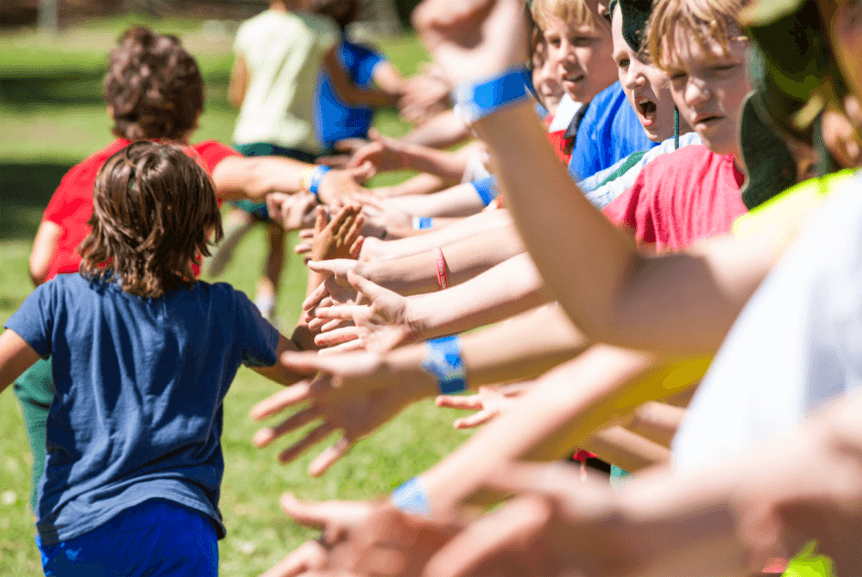Sport is extremely important for the development of every child, although we do not always understand why and for what specific reasons. In this article, you will find a structured background on why exercise and sport play such a large role in the daily life of children and are a mandatory part of their development.
Each of us is born with a natural need to move. Babies move intensively in their mother’s womb, which has a positive effect on their development – thanks to this, their senses can be properly formed and their brains can develop healthily.
It is enough to look at the baby to see how many movements it makes with its arms and legs, even though it spends most of the time lying down. The baby moves intensively, although he does not know why and does not plan it consciously. Such activity is spontaneous and uncoordinated at first, and only becomes more organized with time. The growing child observes the guardians’ movements with curiosity and begins to repeat them with pleasure. In this way, it develops physically, becomes more and more agile, and also stimulates its brain.
Physical education is a school subject in most civilized countries of the world for a reason. For example, in Denmark, in many schools, students practice the so-called “Morning run”.
There is a trend across Europe to gradually increase the number of hours of physical education and to introduce various types of sports activities as part of the compulsory school timetable. In addition to the classic PE, students more and more often have at their disposal additional hours of classes, e.g. in football, hockey, swimming, tennis and others.
WHAT’S ALL THIS FOR?
Why is sport so important for the harmonious development of children and youth? Thanks to sports activities, children not only develop their physical fitness, but also learn many “soft” skills: teamwork, healthy competition, respect, communication, but also perseverance, consistency in action and internal motivation.
When it comes to physical development, exercise supports the development of muscles, bones and joints, and it stimulates many other systems: blood, respiratory, nervous and immune systems. But it is not everything. Many studies show that physical activity also harmonizes mental development: it helps to regulate emotions and even “heal” many diseases, such as, for example, ADHD and childhood depression. Movement also has a positive effect on the sleep quality of children and adolescents, develops self-esteem and self-confidence, and teaches creativity and decision-making in a spontaneous way. Being active prevents overweight, obesity and many chronic diseases.
A HEALTHY DOSE OF EXERCISE
The World Health Organization recommends schoolchildren and adolescents (5-17 years old) to exercise at least 1 hour a day of moderate and increased intensity and 30 minutes of intense muscle strengthening exercise at least 3 times a week.
Younger children use exercise mainly through play: running, climbing, overcoming obstacles, etc. The recommended minimum time for such play for younger children is approx. 30 minutes a day.
TODAY AND IN THE FUTURE
The need for exercise is one of the basic needs of every human being. What makes some adults become active adults and others end up on the couch are healthy habits. The presence of a large dose of sports activity in a child’s life will result in the future willingness to choose an active way of spending time.
Also, when our children feel tired, stressed and complain of low mood, let us encourage them to be active. During exercise, endorphins, called the happiness hormone, are released into the bloodstream, giving energy and improving well-being. And because children learn by example, let’s show them with our lifestyle that sport works in such situations as an antidote.
As you can see, there are many reasons why children should be interested in sport. Fortunately, not only parents and teachers are aware of this. 10 years ago, the European Union in the Treaty of Lisbon initiated many activities aimed at promoting sport, which resulted, inter alia, in supporting the development of sports infrastructure. In many cities and towns, thousands of so-called “Orlików”, thanks to which children and teenagers have access to real sports fields and gyms.
Still, the most important things in promoting movement are good associations with sport, positive emotions accompanying the activity, encouragement from parents and teachers, and a type of movement well suited to the child’s interests. It is best if it is multi-directional and varied. Fortunately, we live in an era when we have a huge amount of interesting sports activities at our disposal. The only thing left is choosing the right sport. Because it is worth it, we hope that there is no need to convince anyone anymore.
